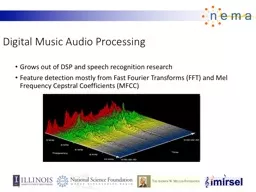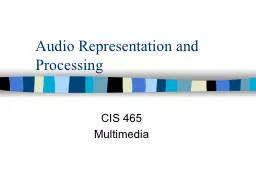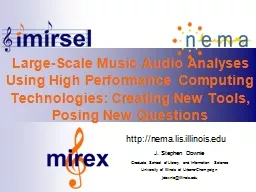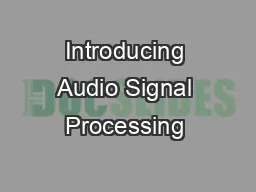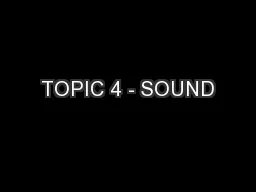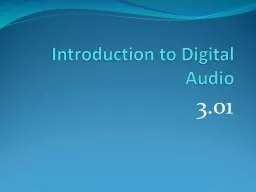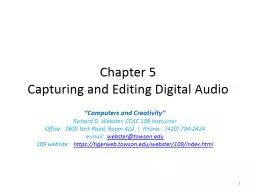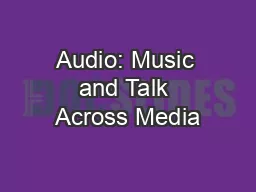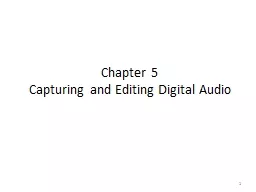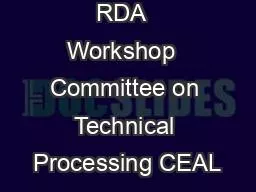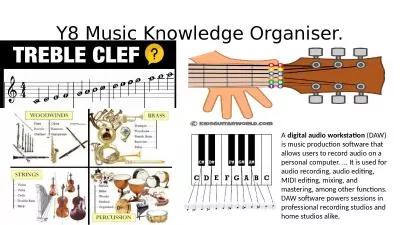PPT-Digital Music Audio Processing
Author : mindeeli | Published Date : 2020-06-25
Grows out of DSP and speech recognition research Feature detection mostly from Fast Fourier Transforms FFT and Mel Frequency Cepstral Coefficients MFCC 1 Music
Presentation Embed Code
Download Presentation
Download Presentation The PPT/PDF document "Digital Music Audio Processing" is the property of its rightful owner. Permission is granted to download and print the materials on this website for personal, non-commercial use only, and to display it on your personal computer provided you do not modify the materials and that you retain all copyright notices contained in the materials. By downloading content from our website, you accept the terms of this agreement.
Digital Music Audio Processing: Transcript
Download Rules Of Document
"Digital Music Audio Processing"The content belongs to its owner. You may download and print it for personal use, without modification, and keep all copyright notices. By downloading, you agree to these terms.
Related Documents

